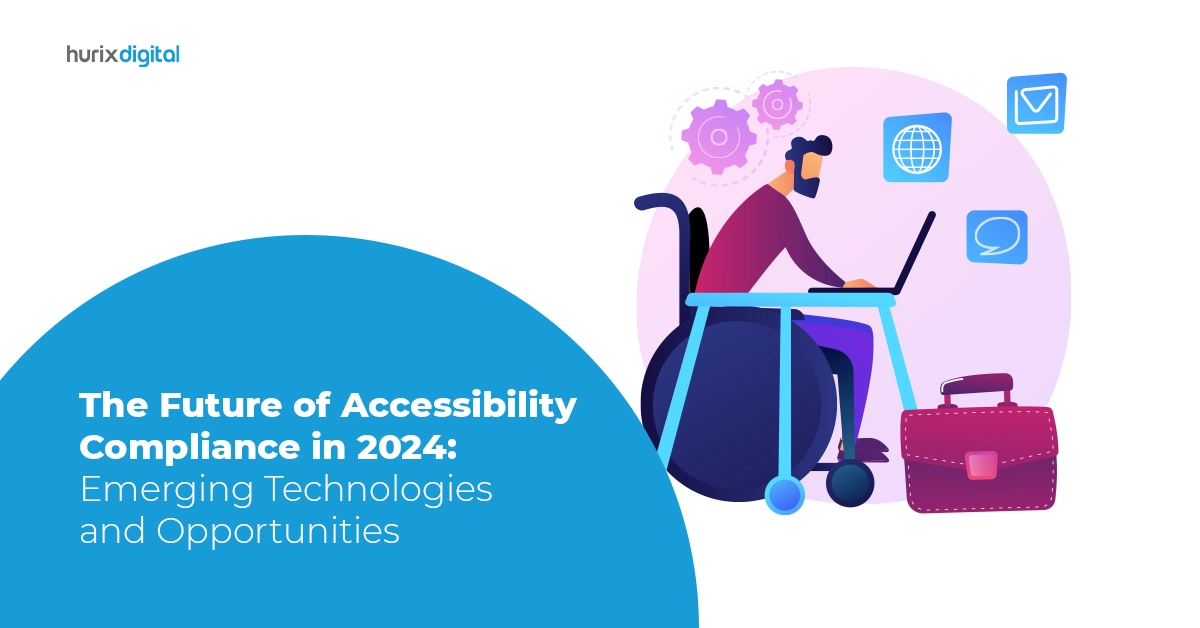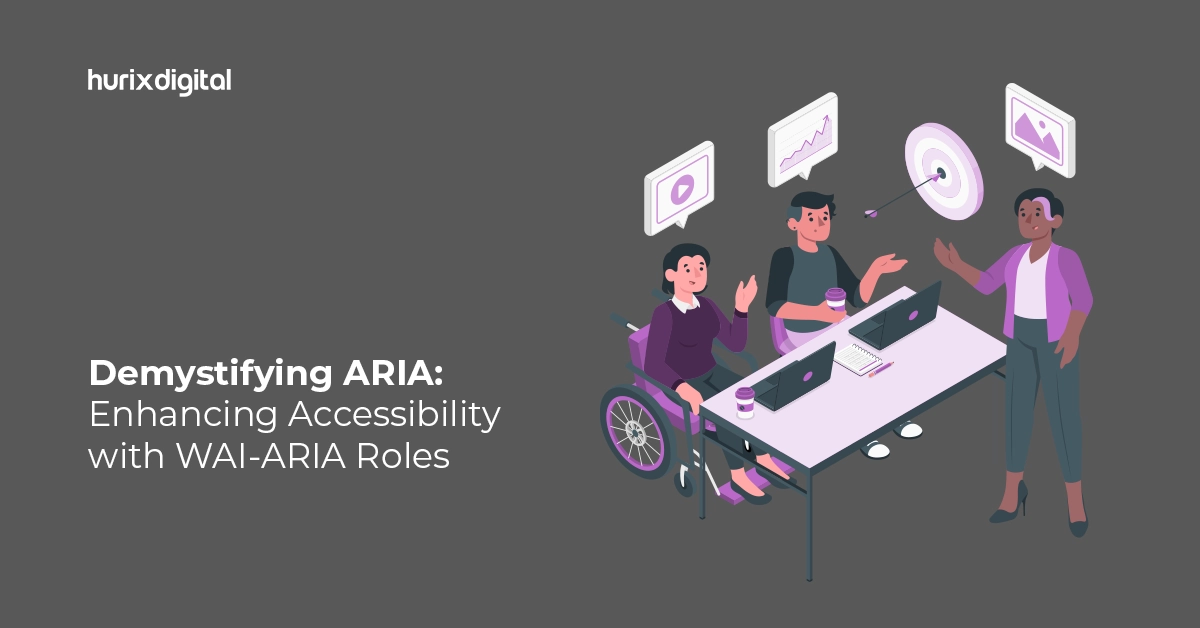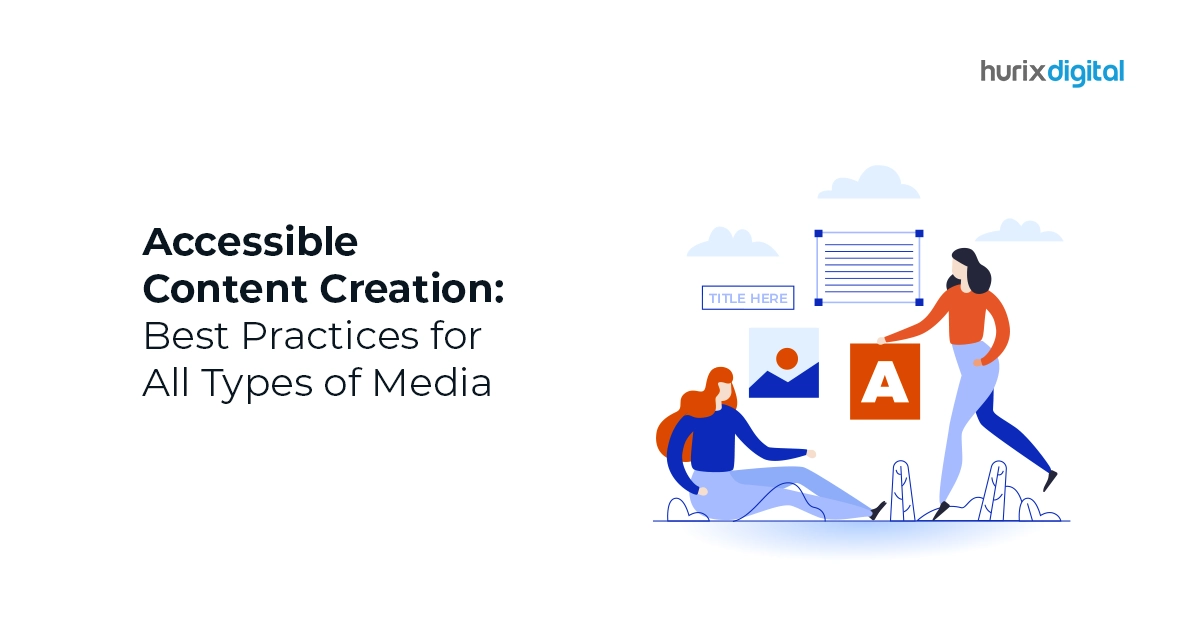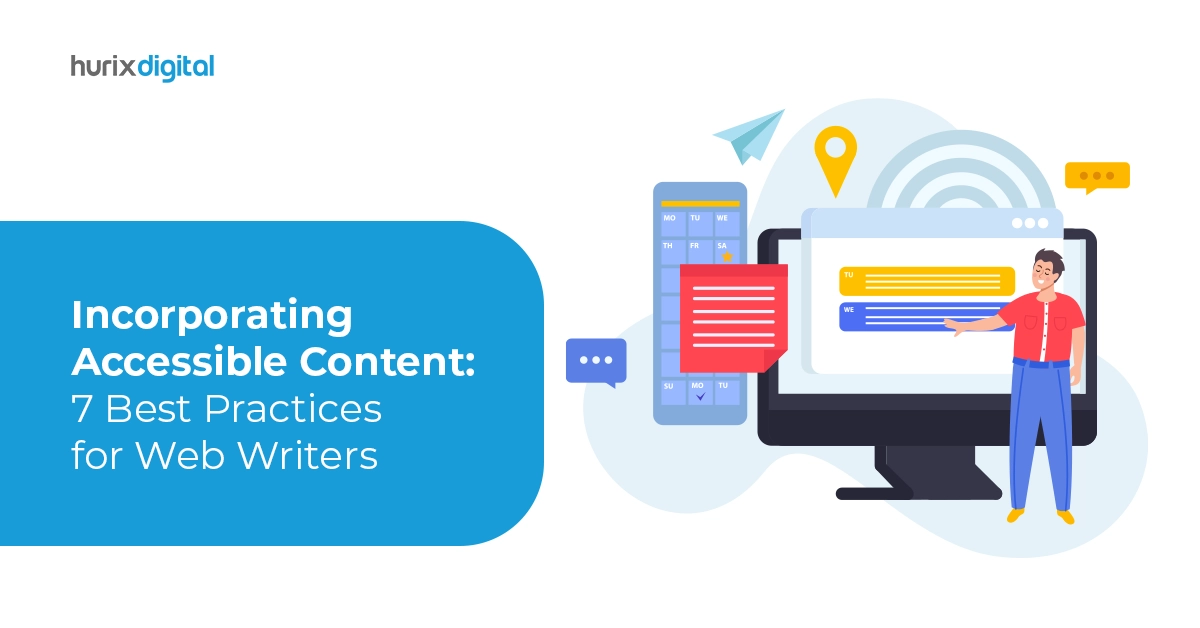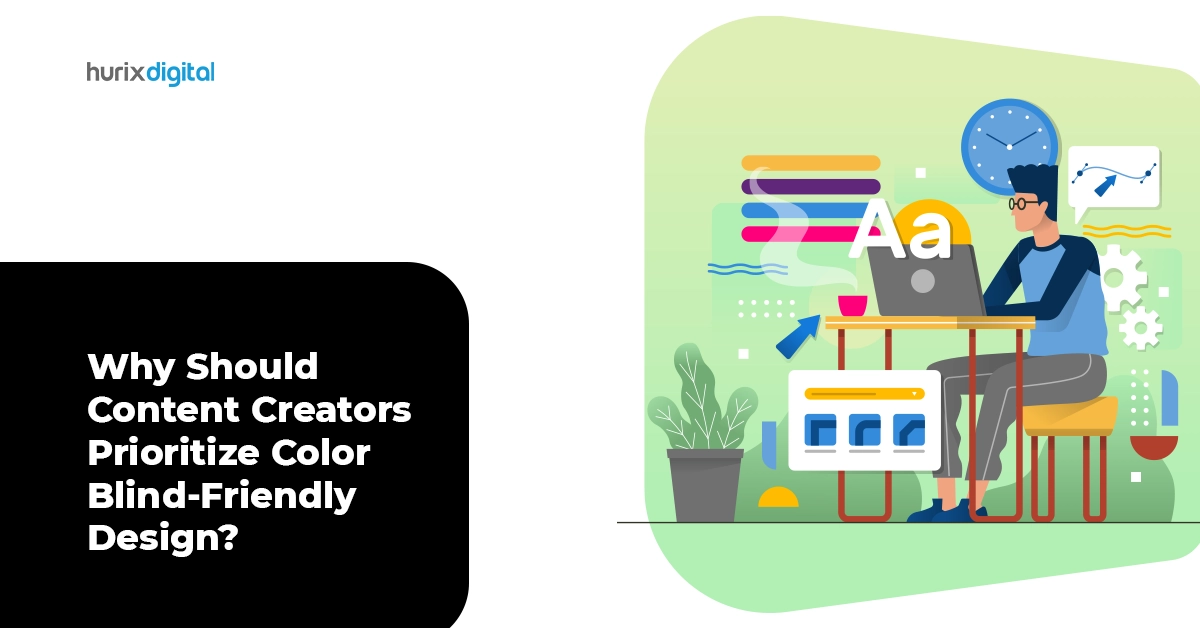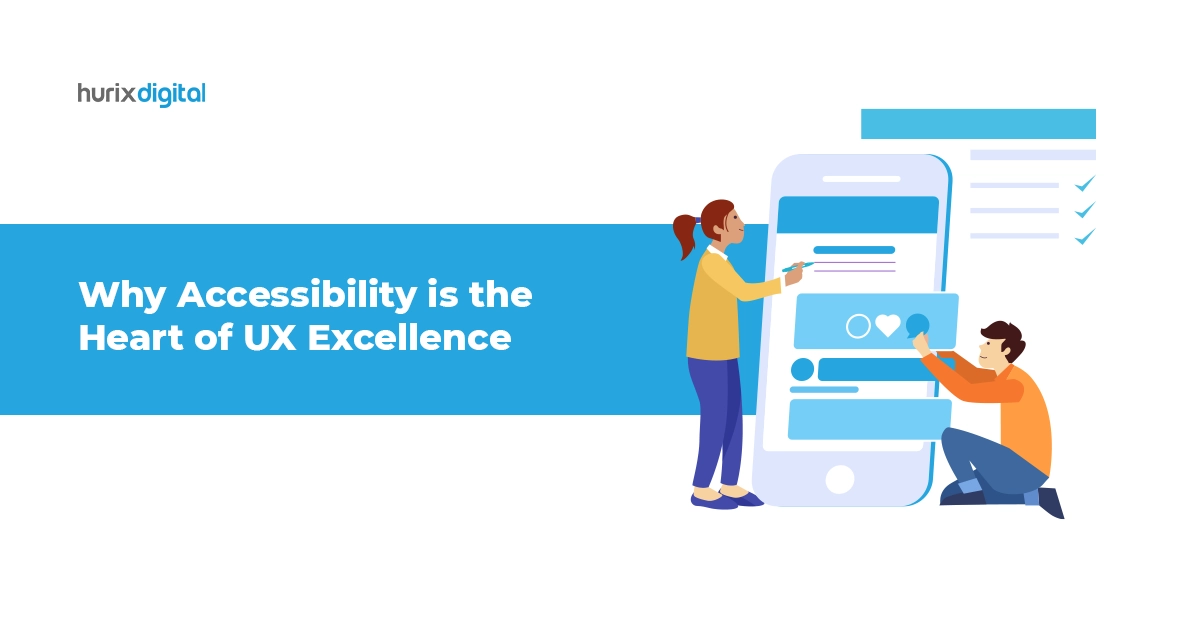Summary
Get a brief overview of the current digital accessibility landscape and the various accessibility laws in the United States, the European Union, and Canada. We also discussed the need for accessibility compliance in 2024 and the importance of it.
In today’s time, accessibility is not just a checkbox but a fundamental aspect of user-centric design and technology integration. Therefore, more and more organizations and policymakers are recognizing the importance of addressing digital accessibility concerns.
Despite the efforts, achieving digital inclusivity remains a significant challenge in many ways.
The latest data from the WebAIM Million reveals that in 2023, over 95% of these pages still struggle with WCAG 2 accessibility compliance issues. The increasing complexity of web pages in recent years has added to the challenge.
If you’re curious to explore how emerging technologies and advancements will impact accessibility compliance in 2024, we’ve got you covered. In this post, we’ll explore the nitty-gritty of this constantly evolving domain. Let’s get started!
Table of Contents:
- Digital Accessibility Laws in the USA, the EU, and Canada
- Emphasizing the Need for Compliance in 2024
- Emerging Technologies and Their Impact on Digital Accessibility
- To Wrap Up
Digital Accessibility Laws in the European Union, the United States, and Canada
In the European Union, efforts to assimilate the requirements for accessibility in online spaces have materialized in the form of the European Accessibility Act. Proposed in 2011 and enacted in 2019, this Act aims to create consistency in accessibility standards applicable to both public and private sectors.
The enforcement of these standards will become mandatory as of June 28, 2025, reflecting the EU’s commitment to fostering an inclusive digital environment. Similarly, in the United States, the digital accessibility industry has been experiencing gradual but notable developments. The most significant update came in 2022 when the United States Department of Justice clarified that the Americans with Disabilities Act applies to web content also.
On August 4, 2023, the U.S. DOJ issued the eagerly awaited notice of proposed rulemaking (NPRM) outlining accessibility standards for websites and mobile applications covered by Title II of the Americans with Disabilities Act (ADA).
Lastly, in Canada, agencies under the federal government have been obligated to meet the Web Content Accessibility Guidelines 2.0 AA standard. This has been mandated through Canada’s Standard on Web Accessibility, which has been in existence since 2011.
The Accessibility Standards Canada’s 2023-2024 plan drafted standards on information and communication technologies, agreeing with Web Content Accessibility Guidelines and reflecting the country’s commitment to digital accessibility.
Also Read: Common Pitfalls in Mobile App Accessibility Testing and How to Avoid Them?
Emphasizing the Need for Compliance in 2024
Being aware of the digital accessibility laws is vital for organizations in both the USA and the EU. As the US Department of Justice has made amendments to Title II ADA, changes in technical standards impact public entities’ obligations.
Meanwhile, the European Accessibility Act’s full enforcement in 2025 underscores the urgency for businesses operating in the EU to align with its standards.
In 2024, it is important for organizations to prioritize digital accessibility compliance, not only to meet legal requirements but also to create inclusive and accessible digital spaces for all users. Failure to comply may not only result in legal consequences but also hinder the broader goal of fostering a universally accessible online environment.
Emerging Technologies and Their Impact of Digital Accessibility
Emerging technologies, including Artificial Intelligence (AI), Machine Learning (ML), and chatbots, have the potential to impact the future of online accessibility in various ways significantly:
1. Automated Accessibility Testing
AI and ML can be employed to automate the testing of digital content for accessibility. These technologies can analyze web pages, applications, and documents to identify potential accessibility issues, simplifying the testing process and ensuring quicker identification and resolution of problems.
2. Natural Language Processing (NLP) for Improved Interaction
Chatbots, powered by NLP and AI, can enhance accessibility by providing a more natural and intuitive way for users to interact with digital platforms. This benefits individuals with varying abilities, including those who may face challenges with traditional user interfaces.
3. Automated Content Generation
AI technologies can automate the generation of alternative text for images, captions for videos, and transcripts for audio content, improving accessibility for users who rely on screen readers or other assistive technologies.
4. Predictive Text and Autocomplete
Predictive text features, driven by ML algorithms, can assist users with cognitive or motor impairments by reducing the amount of typing required. Autocomplete suggestions based on user input can enhance efficiency and accessibility.
5. Voice Assistants and Voice Recognition
AI-driven voice assistants and speech recognition technologies contribute to accessibility by allowing users to interact with devices and applications through voice commands. This is highly beneficial for individuals with mobility or dexterity challenges.
6. Enhanced Data Interpretation
ML algorithms can help in processing and interpreting complex data, making information more accessible through simplified visualizations or alternative formats for users with cognitive disabilities.
Furthermore, when integrated into digital accessibility tools, it can learn from user interactions and feedback, leading to continuous improvements in providing more accurate and effective accessibility support.
Despite the positive impact of AI and ML, it’s essential to approach the integration of these technologies with mindfulness towards potential challenges and unintended consequences. Ensuring that these technologies are designed with accessibility principles in mind from the outset is very important for creating a digital world that is truly inclusive and accessible to all users.
Also Read: Accessibility for Masses – Know How Hurix Digital Comes in
To Wrap Up
In the pursuit of a digitally inclusive future, there’s a growing recognition of the need for a more intentional approach to digital accessibility tools and technology.
While progress has been made in implementing these solutions, it’s crucial to move beyond mere adoption and focus on thoughtful utilization. By understanding the nuanced requirements of diverse users, organizations can enhance the effectiveness of accessibility tools and technology, creating truly inclusive digital environments.
If you need help making your websites and apps easy for everyone to use? Hurix Digital is here to help. Our team of experts can lead your organization in adhering to accessibility guidelines, ensuring that your digital products are accessible to a wide audience.
Contact us to learn more!


